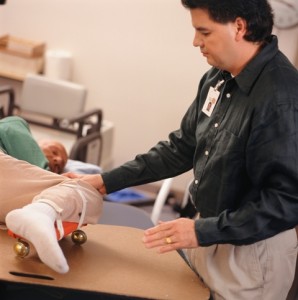May is Stroke Awareness Month, so it’s a good time to learn about the kinds of strokes. There are two different kinds of strokes—ischemic and hemorrhagic—and both occur when blood flow to the brain is interrupted. Ischemic strokes are caused by blood clots that block a blood vessel or artery in the brain. Hemorrhagic strokes are caused when a blood vessel in the brain breaks and leaks into it. Of the two kinds of strokes, ischemic strokes are the more common, making up 80% of strokes.
The brain relies on only two sets of arteries to bring it blood, so it’s essential that these arteries function properly. Ischemic strokes occur when one of these arteries is blocked by the fatty buildup of plaque (which is why it’s important to maintain a healthy cholesterol). People have different reactions to strokes because strokes can happen anywhere in the brain, leaving the symptoms of a stroke dependent on its location.
 A stroke that occurs on the right side of the brain can leave the left side of the body paralyzed and cause difficulty with thinking and simple reasoning. A stroke that occurs on the left side of the brain can leave the right side of the body paralyzed, and interferes with the ability to speak. A stroke that occurs in the cerebellum can leave the victim feeling clumsy and disoriented and unable to walk, talk or eat. A stroke that occurs in the brain stem may leave the most damage, as it interferes with the body’s involuntary functions such as breathing, digestion, heart beat and the ability to be alert and awake.
A stroke that occurs on the right side of the brain can leave the left side of the body paralyzed and cause difficulty with thinking and simple reasoning. A stroke that occurs on the left side of the brain can leave the right side of the body paralyzed, and interferes with the ability to speak. A stroke that occurs in the cerebellum can leave the victim feeling clumsy and disoriented and unable to walk, talk or eat. A stroke that occurs in the brain stem may leave the most damage, as it interferes with the body’s involuntary functions such as breathing, digestion, heart beat and the ability to be alert and awake.
Kinds of Strokes
While it may be impossible for people around a stroke victim to recognize what location of the brain a stroke is occurring in, there are common symptoms of a stroke that can be used to help someone as soon as possible. The faster a stroke victim is treated, the less damage is likely to occur. Some common symptoms include:
- Trouble with walking and loss of coordination
- Trouble with speaking and understanding
- Paralysis or numbness of the face, arm or leg
- Trouble with seeing in one or both eyes
- A sudden, severe headache (sometimes with vomiting)
A stroke can leave permanent brain damage and disability, so time is of the utmost importance. If you think someone is having a stroke, call 911 immediately.
Kinds of Strokes was written by Taryn Yudaken, MSG staff writer and freelancer who specializes in food and health. Find her at taryn.yudaken@hotmail.com
Anatomy of the Brain: Stroke Center at University Hospital, Newark, New Jersey. (n.d.). The University Hospital, Newark, NJ. Retrieved May 3, 2013.
Stroke: Symptoms – MayoClinic.com. (n.d.). Mayo Clinic. Retrieved May 3, 2013.